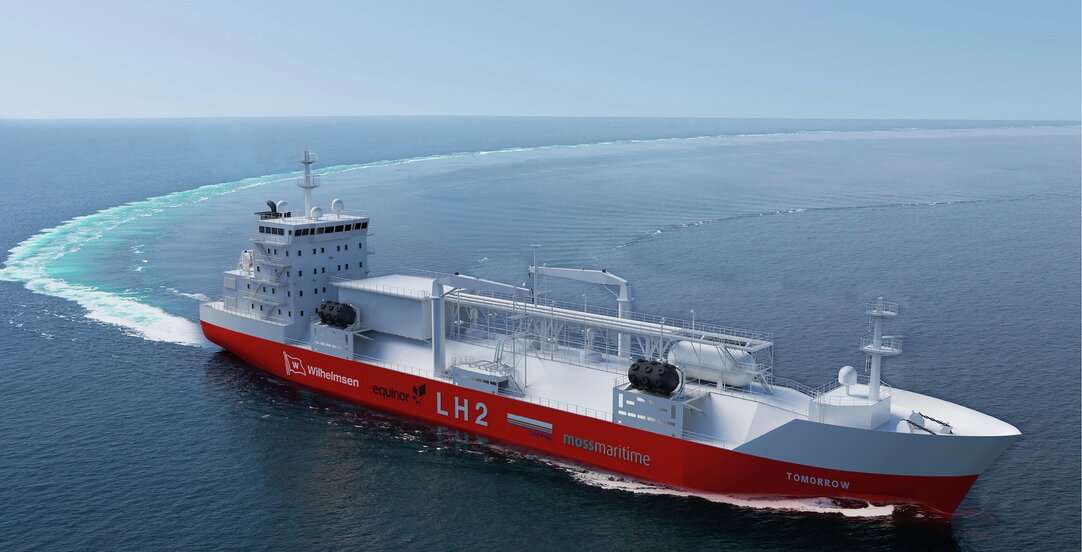Marine transportation solutions and applications of hydrogen – contractual considerations for hydrogen projects and the hydrogen value chain

The hydrogen industry is undergoing rapid development, in particular due to the ever-increasing focus on reducing the carbon footprint and emissions across all businesses and industries. Hydrogen has a wide range of applications, and projects of various scales are being developed to cater for the varying local- and end-users’ needs. As a result, a variety of contractual frameworks and structures will likely emerge – both on a project-by-project basis and regarding the hydrogen value chain as a whole.
Reading time 4 minutes
As with other industry sectors, the contractual, financial and operational particularities for hydrogen projects and the overall hydrogen value chain will depend a number of factors. When developing the contractual structure, key factors to determine will include the relevant project’s location, size and scale, and intended end-users of the hydrogen to be produced.
Capital intensive, larger scale hydrogen projects and production plants will likely require structures with a longer term perspective and commitment from stakeholders, including the intended hydrogen buyers and users. This is in many respects similar to the contractual structures traditionally applied to LNG projects, with long-term transportation and offtake agreements required to ensure sound and bankable projects.
On the other hand, smaller-scale and less cost intensive projects intended for multiple hydrogen buyers and end-users may not require the same level of commitment, and could adopt more flexible contractual structures.
The need for development of different types of contractual structures is particularly evident in relation to marine transportation solutions and applications for hydrogen.
Methods and needs for transportation
As with other energy carriers, such as crude oil and natural gas, the production of hydrogen will in many cases not occur at the same location as the location of its intended end-users – creating a need for transportation.
Hydrogen is generally either transported in a compressed state under high pressure (CH2) or in a liquid state (LH2). Specialised pressurised tanks can transport CH2 by road, rail or sea. Meanwhile, creating LH2 is a more energy consuming and extensive process than creating CH2. In addition, LH2 requires the transportation in cryogenic tanks by rail or trucks or, on a larger scale, on-board dedicated and costly LH2 tankers. See further comments on contractual framework and considerations for certain types of transportation methods below.
(a) Bulk transportation:
For the transport of larger volumes of hydrogen over longer distances, using dedicated liquefied hydrogen tankers (so called “LH2 carriers”) may be preferable, as converting hydrogen from its gaseous state to LH2 reduces its volume by a factor of 800. This volume reduction drastically improves the economics and efficiency of long distance transportation. Hydrogen projects relying on transportation by LH2 carriers have already been developed in Asia and Australia. As mentioned above, hydrogen projects are in many respects similar to LNG projects, for example by proving capital expenditure intensive, due to the high cost of liquefaction plants and LH2 carriers. Capital intensive projects commonly require longer term charters for the LH2 carriers, as well as longer term commitments for the purchase and offtake of hydrogen itself.
LH2 carrier technology is similar to that of LNG carriers – therefore provisions to consider under LH2 charterparties will be similar to those considered under LNG charterparties. This includes provisions and warranties with respect to the amount of LH2 cargo that will evaporate during the transportation phase (so called “boil-off”).
(b) Container transportation:
Whereas some projects rely on transportation of hydrogen to users in a liquid state with LH2 carriers, others rely on transportation of hydrogen in a compressed state using standard ISO sized container frames. Transporting hydrogen this way involves fitting the ISO container frames with high-pressure tanks containing CH2. Conventional container vessels may then transport the containers (unless containers are transported by rail or trucks). For this method of transportation, traditional legal considerations and issues of general cargo trade will be applicable. However, considerations reflecting the special nature of the cargo will also be applicable. Container-based transportation solutions may also result in the development of contract structures for container leasing and rental arrangements.
(c) Marine fuel:
In projects where hydrogen is to be used as a fuel for vessels, many of the legal issues applicable to the traditional bunker trade will be of relevance. However, additional considerations have to be made to cater to the special characteristics of hydrogen, as well as whether hydrogen is to be supplied in a compressed or liquid form. Standard bunker supply terms and conditions will have to be amended and modified, and provisions and requirements in relation to quality sampling will have to be considered. The requirement for bespoke contractual arrangements will likely stand out in early phases of the development where hydrogen fuel is not generally available. From a wider project perspective, projects that aim to deliver hydrogen as a fuel for vessels may be reliant on customers committing to take certain volumes in order to justify the cost of developing bunkering facilities and equipment. If so, the contract framework will have to be tailored to meet these requirements.
Tailoring is key
There are exciting times ahead for the hydrogen industry, especially within the green energy and maritime space. We expect the development of a variety of concepts, and adoption of various commercial, financial and operational structures. The contractual framework and structure chosen for hydrogen projects will need close consideration, and tailoring based on the overall project structure and value chain.

